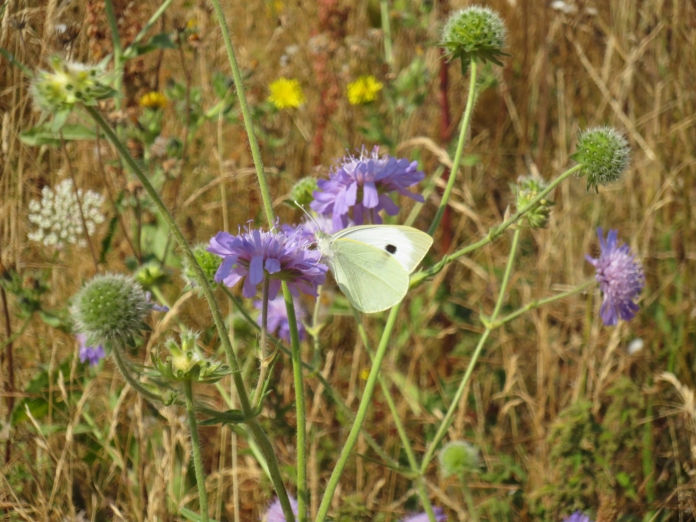When it comes to photography there are some rules worth thinking about. Rules tend to make a good starting point when you are photographing and editing. Whether you keep to the rules or not will hopefully vary. This is a post about almost keeping the rules and the technology that can help you refine your photographic vision. The photo I was editing was this one:
Rules Broken: Shooting during the middle of the day and shooting in Jpeg format.
Verdict: Guilty and unrepentant. You only live once and go live your best life. You can tell them you read it here if you feel the need to pass the buck.
During the editing process, the first edit I did was a crop. I used the rule of thirds overlay within my crop tool, so this is what was on my screen:
You can see how I’ve taken some liberties with the rule of thirds here while keeping the spirit of the rule. I do this a lot, start with the overlay and then go from there. There is a simple reason for this “almost” rule of thirds image. It’s the other elements in the photo. There are some distracting yellow flowers at the top that are being cropped out and a few purple ones near the bottom. An element deliberately kept in was the white flowers that are a color match for the butterfly.
Rules Broken: Rule of Thirds.
Verdict: Just a bit out of bounds.
Next up is sharpening. I’ve approached this in a bit of a different way. Firstly, I did not want to sharpen the whole image. I was only interested in the butterfly and the blooming flowers. The rest of the image had enough detail for my liking. In Luminar, instead of using the clarity slider, I’ve used the details enhancer. I prefer this slider because it breaks it down into three separate sliders, small, medium, and large. I’ve boosted the small and medium details. I also used a mask to apply the filter to only the area I wanted the change. I use to hate masks, but over the years the technology behind them has improved making them much easier to use:
Rule Broken: Always sharpen your image.
Verdict: Managed to both keep and break this rule, how annoyingly clever is that?
The last edit was the vignette. The default in editing software is the center of the image. If your editing software allows you to change that, I would encourage you to give that a try, it’s a way of highlighting your main subject which may not be in the center of the image. In this case, I put the vignette center on the eye of the butterfly.
Rule Broken: Vignette is centered in the middle of the image.
Verdict: Guilty and also guilty of encouraging others.
Here is the final image with all the mentioned edits:
What is your verdict? Do these edits work, with the rules flexed and even broken in places? Feel free to comment below.
Cheers!
Added to A Photo A Week Challenge, Rule of Thirds and Tuesday Photo Challenge, Technology.






Love the edit and am a firm believer that rules are there to be broken 😄
LikeLiked by 3 people
Thanks very much and I agree 🙂
LikeLiked by 1 person
Exactly what I do , I follow the rules but than I break the rules to my liking. I love this photo. Isn’t fun to change and adjust a photo. I love the light color of the butterfly with the gorgeous color of the purple flower. Great shot.
LikeLiked by 3 people
Thank you very much, and I’m always excited to get a good butterfly shot!
LikeLike
This works completely! I am also guilty of post-processing edits to meet the rule of thirds. I think a lot of people do. You can’t always take the time to line up your shot exactly as it should be.
LikeLiked by 3 people
No, I often don’t have a lot of time, so I just do my best and leave the rest to the editing process.
LikeLiked by 1 person
I like the result. A bit of zoom, a bit or bokeh.
LikeLiked by 2 people
A bit OF bokeh. IMO photography rules are good guidelines, only.
LikeLike
I agree, they are more like guidelines.
LikeLiked by 1 person
Rules are there to be broken…I love the blurred background and how the butterfly takes centre stage
LikeLiked by 2 people
Thanks very much, I liked how the background turned out straight out of the camera.
LikeLike
Love this so much! Keep flexing, the edits work! 👊🏻
LikeLiked by 2 people
Thanks very much 🙂
LikeLiked by 1 person
I love the final edit, Amy. I crop by eye, mainly to focus attention where I want it, and then sharpen. Not very sophisticated, I’m afraid. 🙂 🙂
LikeLiked by 3 people
Well here’s the thing, at the end of the day, the photo has to satisfy you the photographer, rules or no rules.
LikeLiked by 1 person
I like it. I am not advanced enough to just sharpen certain parts of an image but I like what you have done here. And as for the rule breaking…..carry on!!
LikeLiked by 2 people
Thanks very much!
LikeLiked by 1 person
Amy! I’m loving this series. Two questions: 1) why the first rule (no middle of the day shooting and avoid jpeg)? And 2) what benefit does the rule of thirds get you again? Always love your explanations. 🙂
LikeLiked by 2 people
Hi 🙂 Thanks for your questions. The first rule, no middle of the day shooting is just referring to the light; in the middle of the day, it’s often at its least forgiving, so harsh shadows and difficult exposures for photographers. Jpeg, is seen as inferior to RAW because it contains less information and therefore less to work with when you go to edit. Both of those things are reasonable things to consider when you are shooting and when you are deciding what camera to shoot with. My objection to both of them is I find them to be too exclusionary. It’s my opinion that you should shoot whenever you have the opportunity and with the gear you have. As for the rule of thirds, if you look at that grid, the points where the lines intersect are all points where your eye would naturally tend to look, so putting your subject on one of them tends to be a good choice. I find this rule super helpful and interesting. It’s also my opinion that the more you work with it, the better you understand when to break the rule and create an impactful photo by doing that deliberately.
LikeLiked by 2 people
Ah! I have heard about the softness of morning light, so that makes sense. I had also heard about the rule of thirds in images, but I didn’t realize it was the points of intersection, I just thought it was trying to center your item of focus inside the middle 1/3rds. Good to know, Amy!
And of course, my mind goes to the rules in writing that we are also told, but that can also get in the way. Framing your objections to the rules you’ve mentioned as “exclusionary,” is a perfect way to think about those writing rules also. Thanks, Amy!
LikeLike
That morning light you are talking about is referred to as the “golden hour” and also includes the hour before sunset. So technically two hours, they are considered the best time for natural light in photography.
I know that writing is full of rules as well and my guess would be that like photography, there are some valid reasons to know and understand them even if you don’t always follow them 🙂
LikeLiked by 1 person
yes, absolutely, one that comes to mind easily is the “show, don’t tell,” rule. Intended for beginners, who often overlook the opportunity to dramatize a story through dialog or action or description … but it turns out lots of times narratives are “telling,” but you just need a strong voice, something that draws in the reader. Hah!
Thanks, Amy!
LikeLike
There’s a similar thought in photography, that if you have to explain a photograph too much, perhaps you need to think about re-shooting in order to tell the story in a better way.
LikeLiked by 1 person
Hmmm, yeah, I can see that!
LikeLike
I love it. Keep going. As I used to say to my students: The rules are there to be learned. When you know them – then feel free to experiment and break them.
LikeLiked by 2 people
I agree with this idea, it is helpful to understand the rules as they tend to be a good starting point.
LikeLiked by 1 person
Fascinating photo editing lesson. Rules are just a suggestion – this is art after all! I don’t have advanced editing software, but now am more than curious about it. What fun!
LikeLiked by 2 people
Thanks very much and I agree, the rules really just are suggestions, and some of them are much more helpful than others.
LikeLiked by 1 person
I love the final crop and the image. Very serene and beautiful.
LikeLiked by 2 people
Thanks very much!
LikeLike
Pingback: Tuesday Photo Challenge – Round Up 158 – Dutch goes the Photo!
I enjoy the breaking of rules. I have a big book of photography rules. I use it to sit on so I can reach the keyboard comfortably
LikeLiked by 2 people
LOL 🙂
LikeLiked by 2 people
Lovely work. It looks fabulous
LikeLike
Thank you very much.
LikeLiked by 1 person
You are welcome
LikeLike